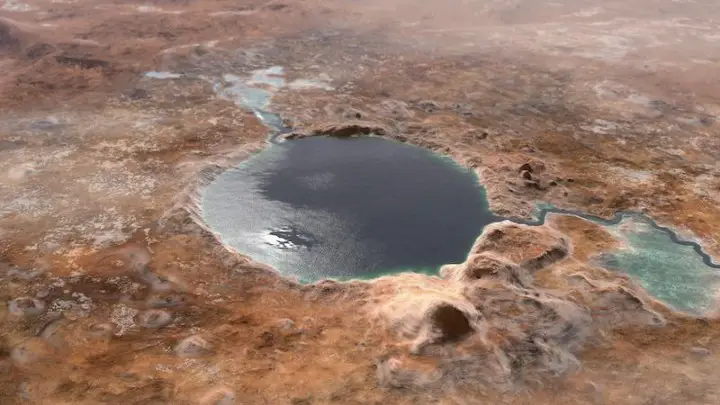 ars has been seen by many as a potential second home for humankind. A place that does not seem to present much of a threat, although the conditions are too harsh for it to be called habitable. When Mars formed about 5 billion years ago, it was a planet quite similar to Earth, filled with a huge abundance of water. In fact, new data shows that Mars may have been all covered by a shallow ocean with a depth of 150 to 800 feet (45 to 243 meters), meaning that it may have once housed more water than Earth itself.
ars has been seen by many as a potential second home for humankind. A place that does not seem to present much of a threat, although the conditions are too harsh for it to be called habitable. When Mars formed about 5 billion years ago, it was a planet quite similar to Earth, filled with a huge abundance of water. In fact, new data shows that Mars may have been all covered by a shallow ocean with a depth of 150 to 800 feet (45 to 243 meters), meaning that it may have once housed more water than Earth itself.
New Data proving the existence of Water
It is not just the theoretical research that shows the existence of water on Mars, but also the geological evidence showing that ancient Mars had large volumes of liquid water. NASA’s perseverance rover was launched back in 2020 and since it had landed it has been gathering data on Mars. The rover landed at the Jezero crater in February 2021, an interesting location that had many unique geological features. Since then it has been gathering all sorts of data in regard to the area.

Something very interesting that has been observed within the area from the many photos that the rover had taken is the placement of some big and heavy boulders that are around 5 feet (1.5 meters) in length. We are quite certain that there is no life on Mars, therefore these boulders were not moved by someone. The way that the boulders are placed seems very similar to what you would observe in a reservoir of water such as a lake or a river.

Based on the geological formation on the ground, this place housed a lot of water. It seems that the crater was once filled with water that was highly energetic but short-duration fluvial flows as presented by the geological formations. Scientists working on this theory have always speculated that the Jezero crater housed water, but with these pictures, they can prove it. What is even more interesting is that this is only one of the many craters on Mars, showing evidence for the theory stating that the whole planet was filled with water.
Another aspect that was used as evidence was the high level of deuterium detected on Mars. Deuterium, also known as “heavy hydrogen” is similar to hydrogen but it has double the atomic mass. When water vapors are hit by the ultraviolet from the sun, the hydrogen is taken away and due to its light mass, it goes away into space. Deuterium on the other hand is heavy enough to stay and based on the high volume of Deuterium, the researchers have determined that there was also a high volume of hydrogen, therefore a lot of water present on Mars.
What happened to the water on Mars?
Until recently, NASA was only able to speculate about the existence of water on Mars but recent research has proven that there was actually once water on Mars and more interestingly that it is still there. Just as our planet, Mars has also sustained natural changes over the 5 billion years of its existence. Mars was once a planet with a quite warm climate, but about 3 billion years ago something happened that shifted the climate and with it also the water on the planet.

One of the most recent and plausible theories that have been published is the Mars crust absorbing all the water on the planet. Scheller et al propose that the minerals that are now buried within Mars’s crust have soaked up all the water. About 30% to possibly 99% of all the water was soaked in a process that started about 3 billion years ago. During the next 2 billion years the minerals had been buried into the crust, meaning that water is theoretically still present on Mars.
There have been other theories formed based on the data collected by the rover stating that some of the water that is present today on Mars may be in the form of a solid (Ice) or gas (humidity within the atmosphere/water vapors). However, the level of water present in these forms would not compare with the water hidden in the buried minerals.
If there is truly water within those minerals then there must be a way to extract it, meaning that Mars may slowly but surely become humanity’s second home. If the water levels on Mars were to be revitalized, we could also produce a lot more oxygen in order to make the planet habitable without the need for a spacesuit.
There have been some studies done on ways to extract water out of minerals, but nothing is as efficient as it would need to be to extract such a high volume of water.
The justification of water existing on Mars raises another question. What if life was once breathing on Mars, but due to the lack of water (the main source of life) it had died and disappeared forever? This is something for you to think about and hopefully something that the rover can find some evidence of.
Avid Writer with invaluable knowledge of Humanity!
Upcoming historian with over 30 million views online.
“You make your own life.”





